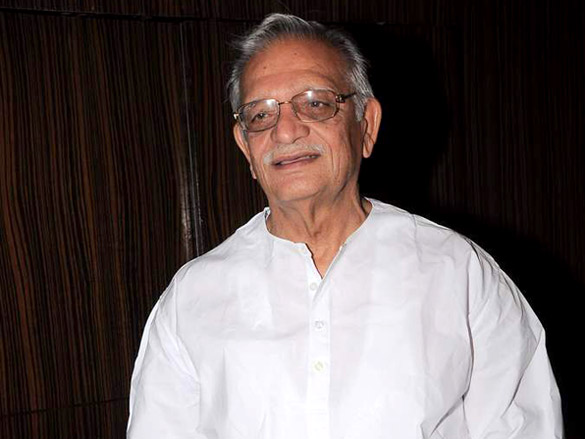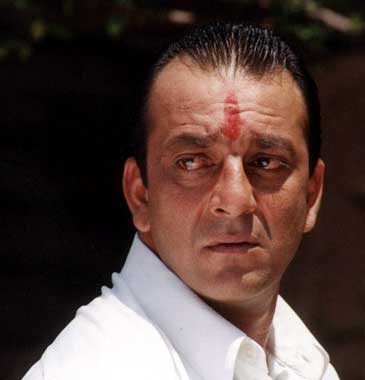Summary: There is no real way of earning a regular and a safe income that is enough to meet the monthly expenses.
The headline was a clickbait. But now that I have your attention, let me explain the logic behind it.
The title song of the 1979 Hindi film Gol Maal was written by the lyricist Gulzar (Honestly, calling him just a lyricist is doing his talent a great disservice. Other than being a lyricist, he has written screenplays and dialogues for a huge number of Hindi films. He is a poet and a short story writer. He is also a translator of repute. Oh, and he has also directed a whole host of Hindi movies as well as a few TV serials along the way. Also, for the millennials, Hrishikesh Mukherjee made Gol Maal, much before Rohit Shetty started using the title for everything he could possibly think of).
Now getting back to the point I was trying to make. In the title song of Gol Maal there is a line which goes: “paisa kamane ke liye bhi paisa chahiye,” essentially meaning, in order to earn money, you first need money. And that is what I am going to write about today.
In the twenty months, as the economy has gone downhill, people have been getting in touch with me on email and the social media, with a very basic financial query. The numbers were small first but post-covid this has turned into a deluge. The question being asked is how a reasonable monthly income can be generated from savings, without taking any risk, in a safe way.
The answer to this question has become very important as people have lost their jobs or seen their salaries being slashed and incomes falling. What does not help is the fact that the post-tax return from bank fixed deposits are now largely in the range of 4-5%. The inflation as measured by the consumer price index is close to 7%.
Before I try answering this question, it is important to understand why interest rates on bank fixed deposits have fallen. The simple answer to this lies in the fact that there is too much money floating around in the financial system, with the banks not knowing possibly what to do with it.
Between March 27 and July 31, a period of little over four months, the non-food credit given by banks has contracted by Rs 1.32 lakh crore or around 1.3%. The banks give loans to the Food Corporation of India (FCI) and other state procurement agencies to primarily buy rice and wheat directly from the farmers at the minimum support price declared by the government. Once these loans are deducted from the overall loans given by banks, what remains is non-food credit.
What does non-food credit contracting tells us? It tells us on the whole borrowers have been repaying loans and at the same time not taking on enough new loans. It also tells us that banks are reluctant to lend. Further, as we shall see, there has been a huge surge in fixed deposits with banks, as people have increased their savings in the aftermath of the spread of the covid-19 pandemic. Banks will take time to lend all this money out.
Between March 27 and July 31, the total deposits of banks have gone up by Rs 5.95 lakh crore or 4.4%. In an environment, where the non-food credit of banks has contracted whereas deposits have jumped big-time, it is but natural that interest rates on fixed deposits have fallen. In fact, the weighted average term deposit interest rate or simply put average fixed deposit interest rate has fallen from 6.45% in February to 6% in June, the latest data available. Now that we are in August, the interest rates may have possibly fallen even more.
In fact, there is nothing new about interest rates on fixed deposits falling, this has been going on for close to eight years now. Having said that, interest rates shouldn’t be looked at in isolation, it is important to compare them with the prevailing rate of inflation. Take a look at the following chart. It plots the average interest rate on fixed deposits during the course of a year, along with inflation as measured by the consumer price index. The difference between the two is referred to as the real rate of return on fixed deposits.
Interest v/s Inflation

Source: Reserve Bank of India.
What does the above chart tell us? Between 2014-15 and 2018-19, there was a healthy difference between the average interest paid on fixed deposits and inflation. (Of course, this is without taking tax on fixed deposit interest into account, else, the difference would have been lower).
These were the years when first Dr Raghuram Rajan and then Dr Urjit Patel were at the helm at the Reserve Bank of India. In 2019-20, the real return on fixed deposits narrowed to 1.6%. Shaktikanta Das took over as RBI Governor in December 2018.
Let’s take a look at the real return on fixed deposits month wise since December 2018, the month when Das took over as RBI Governor. The real return on fixed deposits as explained earlier is the average interest rate on fixed deposits minus the prevailing rate of inflation.
Crash in real returns

Source: Author calculations on data from the Reserve Bank of India.
This chart is as clear as anything can get. The real rate of return on fixed deposits has simply collapsed since end of 2018. This has happened as the interest rate on fixed deposits has fallen and inflation has gone up.
The interest rate on fixed deposits has fallen primarily because the rate of loan growth for banks has crashed over this period. This we can see from the following chart.
Loan growth crash

Source: Reserve Bank of India.
The above chart clearly tells us that the loan growth of banks has crashed since December 2018. In fact, for the week ended July 31, it stood at just 5.4%. Given this, the Indian economy was slowing down even before covid-19 pandemic struck.
Hence, as economic growth has slowed down, the loan growth of banks has slowed down and this has led to fixed deposit interest rates coming down as well. The point being that in economics everything is linked.
Of course, there is more to this than just the economy slowing down. Since February, like the rest of the central banks, the RBI has printed and pumped money into the financial system to drive down interest rates, in the hope of getting businesses and people to borrow more.
Also, with collapse in tax revenues, the government will have to borrow more this year, in order to keep its expenditure going. Hence, it likes the idea of borrowing more at lower interest rates. The RBI goes along with this because among other things it also acts as the debt manager of the government.
The problem is that India’s economic crisis has grown worse since the covid pandemic hit the world, leading to a lot of individuals losing their jobs or facing salary cuts. Small businesses have been majorly hit and incomes have come down dramatically.
In this environment, people are now looking to generate some sort of a regular income from their savings. Of course, most them want to do this in a risk free way. As one gentleman recently asked me: “I am currently not employed after having worked in the corporate sector for 10 years. My request to you is to honestly guide me on how and where to invest to earn steady income especially when the fixed deposit interest rates have fallen so low.”
The first thing I can clearly say is that the gentleman believes that there is a solution to his problem. He believes that it is possible to generate a good steady income despite fixed deposit interest rates having fallen.
I see this belief among many people. My guess is, it stems from the fact that way too many personal finance publications believe in offering solutions to everything. I mean, why will a reader read you, if at the end of it you say something like there aren’t really any solutions to this problem that you might have. At least, that’s how their thinking operates. Also, they need advertisers. And advertisers love solutions to everything, even when none really exist.
In June 2020, the average rate of interest on a fixed deposit was 6%. Once we take income tax into account, the rate of return would be much lower. Of course, there are banks out there which are offering a rate of interest of 7% or more. Nevertheless, these banks are perceived to be among the riskier ones. So, the question is are you willing to take on more risk, for a 1-1.5% higher return? If yes, then these investments are for you.
While, we live in an era where no bank is going to go bust, they can and have been put under a moratorium or periods under which only a limited amount of money can be withdrawn from them. And money that can’t be spent when it is needed, is essentially useless. Hence, if you do end up putting money in a bank which offers a 1-1.5% higher return, do remember not to put all your money into it.
There are corporate fixed deposits which offer a slightly higher return but again they don’t have the same safety as a bank does.
If you are senior citizen, you can look at the Senior Citizens Savings Scheme. But that comes with the pain of dealing with the post office.
Debt mutual funds as many people have found out over the last one year, come with their own share of risks. They were marketed to be as safe as fixed deposits, but they weren’t anywhere close. Also, irrespective of what financial planners and wealth managers might say, debt mutual funds are fairly complicated products, which I am sure most people selling them don’t understand. And that’s why they are able to sell them in the first place.
A lot of individuals in the last few months have turned towards investing in stocks. The logic is that the stock market has rallied from its March low. On March 23, the BSE Sensex, India’s premier stock market index was at 25,981 points. Yesterday, August 26, it closed at 39,074 points, a jump of over 50% in a period of a little over five months. This rally has been driven by a few stocks and if you had invested in the right stocks, you would have ended up with good gains by now.
While, one can’t question this logic, but what one needs to remember is that on January 12, the Sensex was at 41,965 points. From there to March 23, it fell by 38% in a little over two months. The point being the stock market can fall as fast or even faster than it can rise. Also, do remember this basic point that a 50% fall can wipe off a 100% gain. (A 38% fall would have written off a 61% gain).
Hence, the larger point here as I mentioned in this piece I wrote a few days back is, just because an investor takes a higher risk by investing in stocks, it doesn’t mean he will always end up with higher returns, precisely the reason the word ‘risk’ is used in the first place. And by the way, the 10-year return on stocks (including dividends) is less than 9% per year.
So, the question is what should a person looking for a regular and safe income, actually do? As helpless as it might sound, there aren’t many options going around beyond the humble fixed deposit, especially for people who aren’t senior citizens. The trouble is the fixed deposit interest rates are at very low levels.
If you need to generate a monthly income of Rs 20,000 at 6% per year, this needs an investment of Rs 40 lakh.
The moral of the story here being that if you want to generate a regular safe income which is enough to meet your monthly needs, you need to invest more money. Or as Gulzar wrote in Gol Maal: “paisa kamane ke liye bhi paisa chahiye.” I would like to call this the Gulzar principle of investing for a regular income and safe returns.
Also, there are corollaries to this. These are very difficult times. Hence, there is a good chance of individuals ending up in a situation where they might have to spend their savings (rather than just the return on savings) to keep meeting expenditure.
Let’s take the example of a middle-class household with monthly expenses of Rs 50,000. In order to generate this income through a fixed deposit, an investment of Rs 1 crore is needed. Of course, the chances of a middle-class household with expenses of Rs 50,000 per month having savings of a crore, are rather minimal. In this scenario, they will have to resort to spending their savings. Given this, as I keep saying, the return of capital is much more important now than the return on capital.
In the short run, the only way to generate a good regular and safe income is find a job or any other source of income by selling the skills that one has (Like I write. I can do that for a media house or do it individually). In the long run, the next time you see interest rates of 8-9% available on fixed deposits or any other safe investment, invest in these assets and lock in the high returns for as long as possible.
While, this might not sound much like a solution but that is the long and the short of it.




